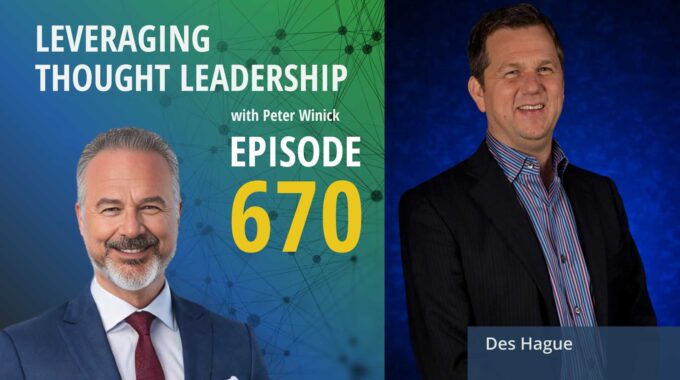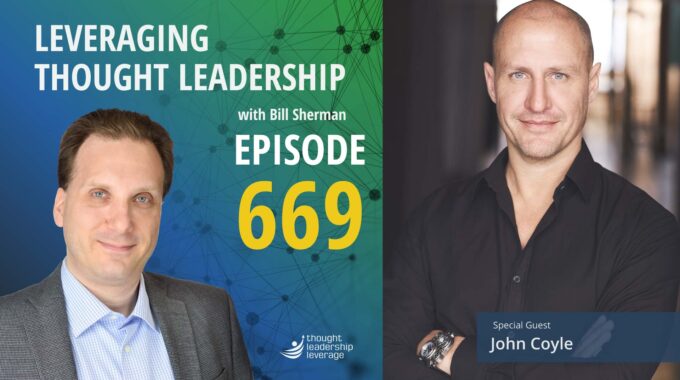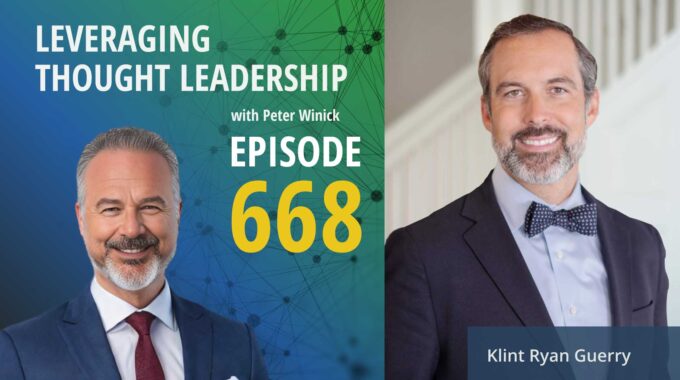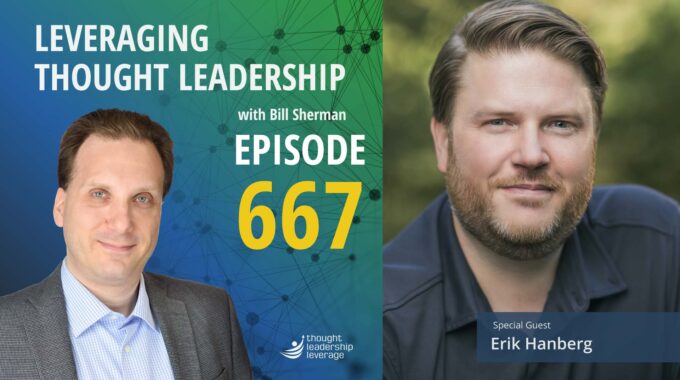Lessons in resilience, growth, and accountability from a global CEO This episode explores why thought…
The Strategy Sprint Method | Simon Severino
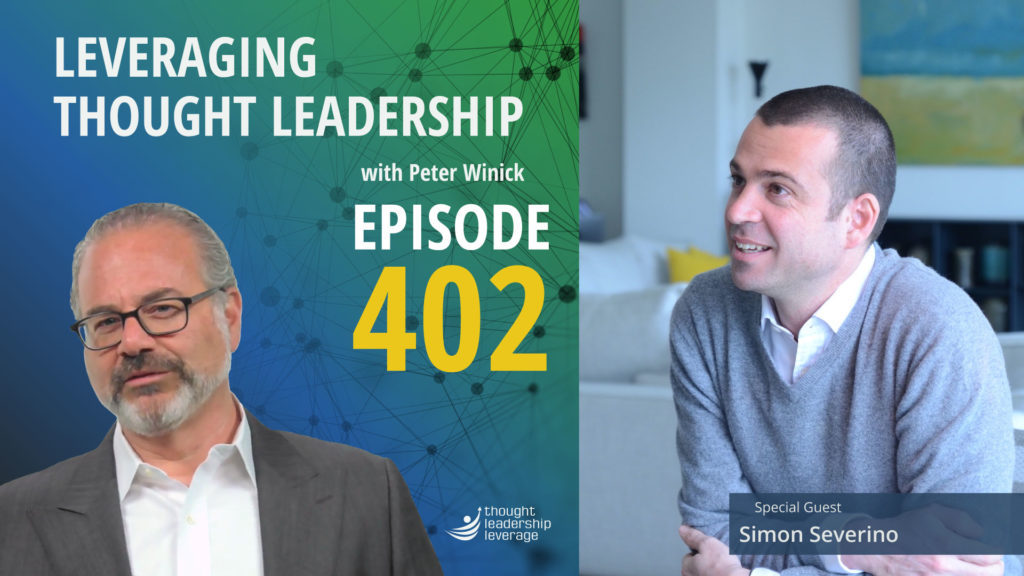
Strategy for Accelerating Growth in B2B business.
An interview with Simon Severino about the Strategy Sprint Method, and staying focused on the things that matter.
Why do so many business owners spend time creating strategy, only to put it on the shelf?
Strategies can’t help your business grow unless they’ve been fully integrated into the decision-making process, and are part of the daily running of the business. Without a strategy, time is wasted, teams are out of alignment, and vital revenue is lost or misspent. So what’s happening?
Today we sit down with Simon Severino, the Founder of the Strategy Sprints Method and author of Strategy Sprints: 12 Ways to Accelerate Growth for an Agile Business. This method focuses on three strategies, three habits, and three numbers to double the revenue of B2B businesses with 90 days of coaching.
We start with the origin of The Strategy Sprints Method as Simon shares how his 17 years working as a strategy advisor left him feeling like there was something missing. Only after he started his own business did he become frustrated and see what the market needed. As many entrepreneurs do he looked back into his career to find the tools that worked and started to build the Strategy Sprints Method.
Simon explains how his method of three strategies, three habits, 3 numbers and 274 prebuild modules gives clients the tools they need to deploy a strategy in a manner that can move the company forward faster, bring teams into alignment on a single sheet of paper, and help them learn faster than the competition.
In addition, we learn how Simon uses his own strategy within his company to avoid the many pitfalls that take executives off track and allow them to get overwhelmed, which often leads to burnout. He shares how having hard checks in place can save you from jumping into new trends that everyone else is doing but won’t actually have a positive impact on your business.
If you’re seeking a strategy for your B2B business and want to increase revenue this might just be what you need.
Three Key Takeaways:
- Thought Leadership strategies need to offer clients a way to move forward that they can understand and buy into.
- Thought Leadership tools need to be accompanied by a strategy to deploy them. A good tool without an instruction manual will not be used.
- Don’t fall into the trap of excitement around new technology and trends. Analyze their usefulness, before committing time or money.
If you need a strategy to bring your thought leadership to market, Thought Leadership Leverage can assist you! Contact us for more information. In addition, we can help you implement marketing, research, and sales. Let us help you so you can devote yourself to what you do best.
Transcript
Peter Winick And welcome, welcome, welcome. Mrs. Peter Winick. I’m the founder and CEO at Thought Leadership Leverage. And you’re joining us on the podcast today, which is Leveraging Thought Leadership today. My guest from way on the other side of the pond. And in the end, if I recall that Simon Severino is the founder of the Strategy Sprints Method. He’s an author. He’s a speaker. The business advisor is an investor. And here he is spending some time with us today. So welcome aboard. Simon How are you?
Simon Severino Hey, Peter. Hey, everybody. Excited to be here?
Peter Winick Yeah. So tell us a little bit about your thought leadership. Your platform is this strategy sprints, right? So what is the essence of strategy sprints and how are the different ways that you’ve put it out into the marketplace?
Simon Severino I was missing something when I was a running my own business. I was for 17 years, I was a strategy advisor. And when you are a consultant, you are always the smart person and you think it’s easy, right? Right. And then you go, Hey, why that? Why? Just what? I told you what to do. Why don’t you just do it? It’s so easy. Profit. And then I was on the other side, and I was now the business owner asking for advice. And I saw, that’s not helpful at all. We need something else. And so out of a big frustration, actually, how to find the right coach, how to find the right blueprint for my business. That is not cookie cutter. How do I find a coach that really understands my business, that really understands how much time I have per day and still have helps me move forward faster, moves my team into alignment, and moves us to learn faster than our competitors. And to ship stuff to ship. Great stuff every week. So I was missing that. And so what entrepreneurs do when you miss something is start building. And I started building it. So I put together my field, my field towards what was working when I did with BMW. The go to market strategy for the new car. What was working when I did with Airbus reorganizing their executive team in Paris. What was working when I did. With those cool teams, their launch of their new product. And so I went to all of these things, put them together into this brand university, and that is available on the phone of our clients right now. So now they have something like Spiderman has Spiderman has his friends who is at home, right? He’s in action. And he’s he has to kick the left or the right door. I don’t know which one to do. I don’t have the time to analyze. Hey, what should I do? And his friend goes, Give me a second. Take a look at the computer, because I checked all the all the all the GPS data. Keep the left door. That’s what an entrepreneur really needs. I need right now this decision, which is maybe should I fire this supplier? Usual hours. I need another decision. Should we enter that market or that market? And so they are very different. And some of them. I just need you two minutes and some others and just maybe ten minutes. But this is what I need in the moment where I need to decide.
Peter Winick Engineer callbacks, strategies, for instance. So you created the new one is as a typical Internet entrepreneur, you created a solution to a problem that you had. And then you said, I’m probably, you know, I’m not that special. Get over it. There’s probably other people that are suffering from the same things, and it’s worked for me. Now, I might as well put it out into the marketplace. Talk a little bit about the various ways that people can consume strategy. Sprint’s content. You’ve got the book, you’ve got advisory. Give me a different sense of sort of the productization side and what that looks like and how you came to make that some of those decisions.
Simon Severino Yeah. So there is a book called Strategy Sprints and there is 1 to 1 coaching. That’s it. That’s all you can consume. And the 1 to 1 coaching is 90 days and is really implementation. So in 90 days, the promise is you will double your revenue. If you’re a B2B business and you have a sprint coach for 90 days, you will double your revenue.
Peter Winick Now, that’s a that’s a pretty word I’m looking for. It’s a pretty aggressive promise. 90 days W revenue, right. That’s a pretty bold statement.
Simon Severino For us, it’s. It’s every day’s, every day’s ordinary day. It’s Monday doubling revenues Monday because some of our clients quadrupled. So there was a client in South Carolina. They’ve quadrupled their sales in the spring. And I was quite impressed. A doubling is not is not so hard. We have three strategies, three habits and three numbers that they have worked so many thousands of times and we have 274 modules ready for them. Blueprints, his wife club is even ready for them to use, so it’s not hard to double your revenue. And the thing that really helps and that’s why it’s called strategy sprints is to have both sides. You have the tactical side, the sprints seven days measure, improve ship and read the 274 tools and you have the strategy side because if forward at all is still a fool. So first we check velocity. Are we going in the right direction at the right place? That’s velocity in the sprint method. So the first thing is the three strategies, the three habits of the three numbers. The three strategies are will this move by 25%, the frequency of your sales, the price that you can charge for the same thing, and 40 conversion rate if it moves by 25% up one of these three things, then it becomes one of the sprint activities. Otherwise it does.
Peter Winick What is the strategy for you? How long do you give it to make a determination if it will hit one of those? I mean, you can’t just you know, if you’ve been in business for 20 years, you can’t just wake up one day and say, okay, by tomorrow afternoon at 2:00, what’s a good timeframe to ascertain whether it’ll be price or close rate or whatever the other better?
Simon Severino Well, the decision is right now in the minutes, we can do it together. So, okay, either let’s go tomorrow on clubhouse and have a great time talking about authority. Will it? We can we can check it right now. I’m sure we would have fun. But would it increase our frequency of our sales by 25%? No. Would it increase the price that we can charge for our offers by 25%? No. Irrespective of if it’s three days off or 30 days, it will just not do.
Peter Winick Okay. So that’s a little bit different use than I thought I heard it. So I like that because what happens is I mean to using clubhouse, right. Six, eight months ago everybody’s on clubhouse. It was I’ve never seen anything like it. And people say to me, well what’s your feeling on clubhouse? I’m like, I don’t have an opinion on clubhouse. What I know is here’s your strategy when I’m talking to a client. Is this a detractor to your strategy to support your strategy or is it neutral? Right. Because clubhouse itself is not a strategy. It is yet another place. And then you have to say, well, you know, is this where my clients are or is this good for the brand? Is this or I’m going to make more clients or whatever. And I think it’s okay to allocate some time to experiment with things like clubhouse. But I also like the idea of having some mechanisms and tools to say, Nope, it doesn’t meet the criteria. Not even going to bother, even though even though everybody else I know is on clubhouse or, you know, should I be on Instagram? Well, I don’t know where your clients on Instagram like a potential client on Instagram you can do anything. Exactly. But like, what’s the point? And I think there’s a confusion between activity and productivity and any sort of good strategy tool gets utilized day to day.
Peter Winick If you’re enjoying this episode of Leveraging Thought Leadership, please make sure to subscribe. If you’d like to help spread the word about our podcast, please leave us a review and share it with your friends. We’re available on Apple Podcasts and on all major listening apps as well as at ThoughtLeadershipLeverage.com/podcasts.
Peter Winick I think and this is where I want to stay with you for a minute here, Simon is a lot of people spend a lot of time, the senior levels of their organization in developing the strategy and then they put it on the shelf. And then they go back to the other 363 days a year and operationalize. And they don’t integrate the utilization of a strategy on a day to day, moment to moment basis. And it seems like that’s a big piece of what your
Simon Severino That’s exactly that’s exactly the strategy has been met and that’s why we go, okay, the three strategies that would increase frequency price or conversion rate. Yep. And if yes, if it becomes an activity of this week right now and we will measure in seven days all the leading and lagging indicators. So the inputs and outputs will be measured. And we have a we have a very simple process. On one page there is the strategy, but also the activities. You’ll see on one page. We call it the focus card or one page. The whole team sees, all right, in three years, this is what we want to achieve. That means these are our yearly goals. That means in this quadrant, these are the main activities and these are the metrics that will tell us if it works every seven days and this is who does what. And then there is just a adult who says, okay, this person does that activity, this role does that activity. And let’s say it’s on one page, the whole team knows who is doing what on which KPIs need to be met and why does it really contributes to the to the overall parent tests.
Peter Winick Got it. And is that really the big differentiator between your process and such? Because if once you make it a habit for a business leader to say, Ah, because business leaders have decisions to make every moment of every day, right? And then they have the strategy, which is usually often the distance. And it’s this aspirational piece and it seems like what you’re doing is, is the conflation of your operationalizing strategy and a moment to moment basis, almost like you’re, you know, monitoring your heart rate or something like that.
Simon Severino Perfect. Perfect is great. But I couldn’t say better. Yes, it’s exactly that. It becomes a real time strategy. So they have a dashboard. It’s it shows there are three numbers. Their current marketing numbers, sales numbers and operations numbers. And the whole team sees these dashboard life. There is the target number, the current number. And you see it visually, you see the gap and you see if it’s going up or not up. So whenever your team has some decision to take, for example, they have to think if the goal of the expensive CRM software or the cheap CRM software now they don’t need to bother you with this decision. They now can take it because, as you said, does it support the three numbers or not? If it does support the three numbers, price is not an issue. If it does not support these three numbers, the software is not an issue. So it’s easy to take decisions right now because use you see what you are building and you see if it contributes to building it better and faster, then yes, it does not. Then it’s a distraction.
Peter Winick Yep. Love it, love it. Love it. Cool. So let’s talk about the application of your eating, your own dog food. Write your application. What are the things that you’ve done or been tempted to do that are sort of violations of your own principles? And how do you stop yourself? Because I think we all do that right?
Simon Severino Yeah, absolutely. So one violation was clubhouse. For example. I went to clubhouse when, when it was hot, when everybody was excited about it, I was like, right. And I started my rules there and they started wasting hours there. So that was a violation of my role because I did not really check. Will it increase one of those three? No. So, okay, so don’t fall into that excitement trap. Right. But that’s how entrepreneurs are. You need to know, right? If you are the force of nature who creates always stuff out of nothing. And these people, they are usually the founders and these people, they are usually very excitable and they see everywhere opportunities. I can turn that into an audience. Let’s go.
Peter Winick Right, right.
Simon Severino So and so that’s why I have these three, these three really double check moments because for these people you have to have them stay on track. Otherwise they start too many things and they spread themselves thin and they burn out.
Peter Winick So State stay there for a minute because I think once you make public or broadcast, these are the three things to yourself, to a coach for your senior leadership team. It’s an interesting way to have an intervention that’s not emotional. Right? So, you know, entrepreneurs do exactly what you said. They want to start a lot of things and everything’s going to work. And that’s great if you work with someone like that, if you’re partners with someone like that, you know, one way you can go about and say, Simon, stop it, you’re driving me nuts, you know, whatever. And in your personal life.
Simon Severino That’s what my team.
Peter Winick It’s exhausting, right? Well, but the other way is to say, all right, time. And so you decided that, you know, whatever, clubhouse two is out and you’re going to spend five hours a week on and that’s lovely, but can you can you make your case against the three principles that we all agreed to and you sort of look at and go, shoot there. Right, right. And that’s a non accusatory, non-judgmental, non way to use the tool. And it gets you as the entrepreneur to a place of going, You know what? She was right Like yeah, this does not match anything we said we want to do.
Simon Severino Yeah. So you have to know your superpowers and your shadow science, right? So my shadow sizes, I start too many things that ones I see everywhere, opportunities. If I go with that, I would burn out. Why did I not burn out so far? Because I always have a team and they know me. And every Friday our team meeting. You start with magic moments and then the dashboard and then it’s letting go. So what do we reduce? What do we cut out of our activities list? And I explicitly ask them, All right, Simon, the crazy guy has started 18 different things again this week. Help me cut them in half, which how do we cut? And then we cut one half. And then because I find them all opportunities, but they have just 24 hours and I want them to have weekends. And so we cut it in half. And then and then and then ask them, can we cut it in half again? And then we try and sometimes we can cut it in half, twice per week. The amount of activities that we have put on our plates. So that’s the theory.
Peter Winick Because most entrepreneurs are additive, not reductive. We can do this and this and this and this. And I think I love what you’re saying. Say, okay, great. If you want to add this to the plate, that’s fantastic. What are you willing to sacrifice or give up in order to do this? Because basically what you’re saying is I’ve required to prioritize our activities because I can’t just add for free, right? Like there’s a cost in addition it has to take away from unless you’re adding more money, more resources, more whatever. But if the team is the same size team with the same hours in the week and you’re asking them to do more, I love the fact that you’re saying, okay, let’s get rid of something. And by the way, that’s a great thing to do is say, you know what, The thing that we started two years ago that we thought was going to do this, it’s not that it’s horrible, but this might be a better way because it’s sort of air, right? So when something is a wild success, it’s easy to figure out when something’s a wild failure, it’s easy to figure out. It’s a big bulk of stuff in the middle. They need some analysis to say, yeah, you know, no one’s going to die. If we got rid of this.
Simon Severino What can we let go? Is one of our most important team questions that we ask every Friday. And if you think about it, I used to buy some furniture because it looks it looked great in the shop. And then I bring it home and it doesn’t look that good here. And then I realized, well, in that shop, it was the only thing in that room. And when there is one piece of furniture in a room, every piece of furniture is beautiful. Then you put it in your home, right? With 17 different things. And that is not so much. Yeah, not so much.
Peter Winick Or maybe the lighting in the showroom was better or the, you know, whatever it was. And it just. Right. Yes. It doesn’t.
Simon Severino Yes. But I could see any object from this desk right now, this flower. And I put it in in a room where it’s the only one. It’s an art. It’s a piece of art. If you can watch it for half an hour. And then I put it into the vase. It’s just one of many flowers. So this is how we remind ourselves. Okay, let’s focus what’s really important. And that conversation is an important conversation because, you know, you have the creative types. They see opportunities. Yeah. But if I just do seven more them and then I repeat it as well. But they didn’t work the first three times. So maybe we stop right now and that’s a good conversation to have.
Peter Winick That’s a great conversation. Well, this has been a fantastic time and I appreciate your time and I appreciate you sharing your story and the way that you use your own intellectual property on yourself to get you the outcomes you’re looking for in your business. So thank you so much for spending time with us today.
Simon Severino Thank you, Peter. Thank you, everybody.
Peter Winick To learn more about Thought Leadership Leverage, please visit our website at ThoughtLeadershipLeverage.com. To reach me directly. Feel free to email me at Peter at ThoughtLeadershipLeverage.com. And please subscribe to Leveraging Thought Leadership on iTunes or your favorite podcast app to get your weekly episode automatically.


